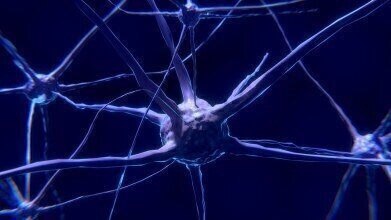Mass Spectrometry & Spectroscopy
Can Brain Stimulation Reduce Chronic Pain?
Dec 27 2018
According to a pooled average derived from multiple best quality studies and general population samples, chronic pain affects 43% of Brits, or the equivalent of roughly 28 million people. The findings are shocking, with the British Pain Society labelling it a "silent epidemic".
While drugs like amitriptyline and nortriptyline are popular pain management solutions, for the first time a team of researchers from the UNC School of Medicine has used weak alternating currents of electricity to ease the symptoms of chronic lower back pain.
Treating chronic pain on a neurological level
The currents target a specific region of the brain to enhance naturally occurring rhythms and significantly minimise the symptoms associated with chronic pain. The breakthrough findings were published in the Journal of Pain and suggest that non-invasive treatment strategies like transcranial alternating current stimulation, also known as tACS, could eventually be used to boost naturally occurring brain waves and treat chronic pain.
"We've published numerous brain stimulation papers over several years, and we always learn something important," says Flavio Frohlich, senior author of the study and director of the Carolina Center for Neurostimulation. "But this is the first time we've studied chronic pain, and this is the only time all three elements of a study lined up perfectly. We successfully targeted a specific brain region, we enhanced or restored that region's activity, and we correlated that enhancement with a significant decrease in symptoms."
Resetting communication in the central nervous system
The study builds on a growing body of research suggesting that brain activity plays a role in chronic pain. Until now researchers have focussed largely on peripheral causes, though Frohlich and his colleagues believe the condition runs deeper. He theorises that over time chronic pain can reorganise communication channels between cells in the nervous system, including neuron networks in the brain. Over time this can create a neural pothole, which can eventually become a major cause of chronic pain.
Julianna Prim, co-first author of the study asserts that brain stimulation could emerge as a cost-effective and discreet therapy that yields excellent results. It would also reduce dependence on opioids, which can be highly effective at treating chronic pain yet also come with serious side effects.
The brain is made up of tens of billions of neurons and is an incredibly complex organ to study. This is where fields like nanotechnology step up. From finding cures for neurological diseases like Parkinson’s and epilepsy to equipping the human brain with miniscule robots capable of connecting to the cloud and sending emails, nanotechnology has incredible potential. For a closer look at the exciting field don’t miss 'Why Does Nanotechnology Require Mass Spectrometry?'
Digital Edition
Lab Asia 31.2 April 2024
April 2024
In This Edition Chromatography Articles - Approaches to troubleshooting an SPE method for the analysis of oligonucleotides (pt i) - High-precision liquid flow processes demand full fluidic c...
View all digital editions
Events
Apr 28 2024 Montreal, Quebec, Canada
May 05 2024 Seville, Spain
InformEx Zone at CPhl North America
May 07 2024 Pennsylvania, PA, USA
May 14 2024 Oklahoma City, OK, USA
May 15 2024 Birmingham, UK


















